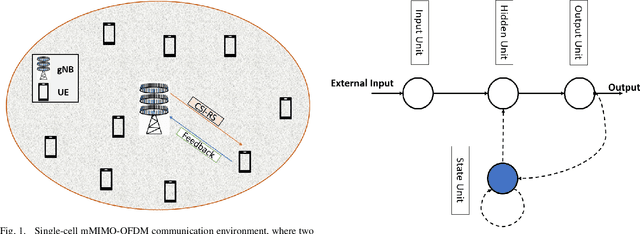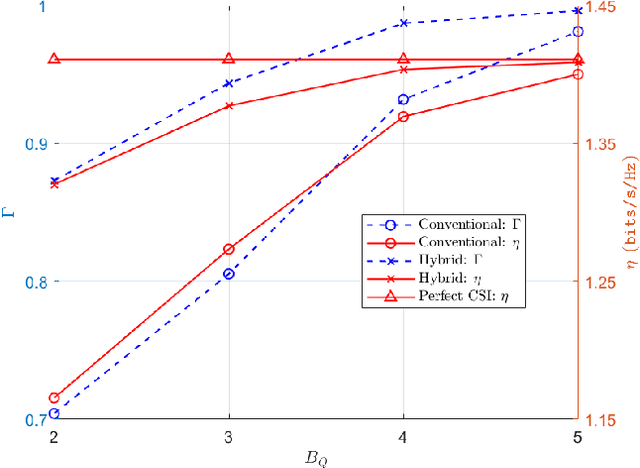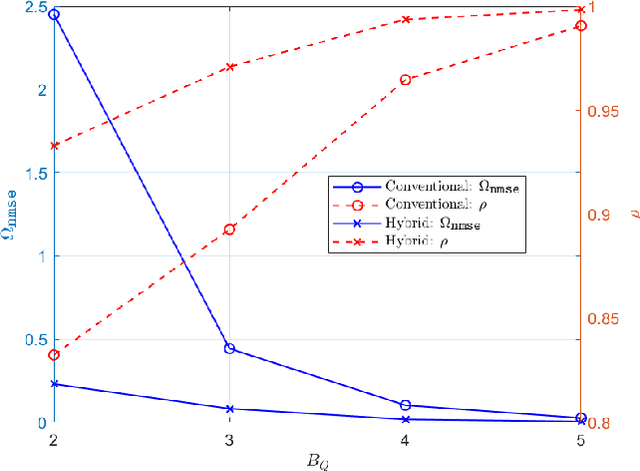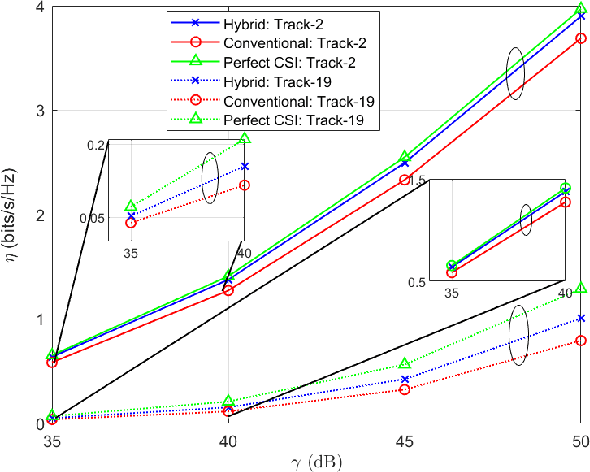Stefan Wesemann
Minimizing Energy Consumption in MU-MIMO via Antenna Muting by Neural Networks with Asymmetric Loss
Jun 08, 2023Abstract:Transmit antenna muting (TAM) in multiple-user multiple-input multiple-output (MU-MIMO) networks allows reducing the power consumption of the base station (BS) by properly utilizing only a subset of antennas in the BS. In this paper, we consider the downlink transmission of an MU-MIMO network where TAM is formulated to minimize the number of active antennas in the BS while guaranteeing the per-user throughput requirements. To address the computational complexity of the combinatorial optimization problem, we propose an algorithm called neural antenna muting (NAM) with an asymmetric custom loss function. NAM is a classification neural network trained in a supervised manner. The classification error in this scheme leads to either sub-optimal energy consumption or lower quality of service (QoS) for the communication link. We control the classification error probability distribution by designing an asymmetric loss function such that the erroneous classification outputs are more likely to result in fulfilling the QoS requirements. Furthermore, we present three heuristic algorithms and compare them with the NAM. Using a 3GPP compliant system-level simulator, we show that NAM achieves $\sim73\%$ energy saving compared to the full antenna configuration in the BS with $\sim95\%$ reliability in achieving the user throughput requirements while being around $1000\times$ and $24\times$ less computationally intensive than the greedy heuristic algorithm and the fixed column antenna muting algorithm, respectively.
Energy Efficient Design of Extreme Massive MIMO
Jan 13, 2023



Abstract:Ever since the invention of Bell Laboratories Layer Space-Time (BLAST) in mid 1990s, the focus of MIMO research and development has been largely on pushing the limit of spectral efficiency. While massive MIMO technologies laid the foundation of high throughput in 5G and beyond, energy efficiency of the associated radio system leaves much room for improvement. With the substantial negative implications of climate change looming ever closer, enabling sustainability is of paramount importance for any future technology, and minimizing energy use is a key dimension of achieving sustainability. Thus, every aspect of 6G design, implementation, and operation will be scrutinized to maximize energy efficiency. An analysis of the massive MIMO 5G radio energy consumption at different loads reveals under what specific conditions 6G should outperform 5G, setting qualitative energy efficiency design goals for 6G. Following this, we propose some design principles for the 6G, focusing on novel operational, component technology, and architecture innovations to minimize energy consumption.
Design of an Efficient CSI Feedback Mechanism in Massive MIMO Systems: A Machine Learning Approach using Empirical Data
Aug 25, 2022



Abstract:Massive multiple-input multiple-output (mMIMO) regime reaps the benefits of spatial diversity and multiplexing gains, subject to precise channel state information (CSI) acquisition. In the current communication architecture, the downlink CSI is estimated by the user equipment (UE) via dedicated pilots and then fed back to the gNodeB (gNB). The feedback information is compressed with the goal of reducing over-the-air overhead. This compression increases the inaccuracy of acquired CSI, thus degrading the overall spectral efficiency. This paper proposes a computationally inexpensive machine learning (ML)-based CSI feedback algorithm, which exploits twin channel predictors. The proposed approach can work for both time-division duplex (TDD) and frequency-division duplex (FDD) systems, and it allows to reduce feedback overhead and improves the acquired CSI accuracy. To observe real benefits, we demonstrate the performance of the proposed approach using the empirical data recorded at the Nokia campus in Stuttgart, Germany. Numerical results show the effectiveness of the proposed approach in terms of reducing overhead, minimizing quantization errors, increasing spectral efficiency, cosine similarity, and precoding gain compared to the traditional CSI feedback mechanism.
 Add to Chrome
Add to Chrome Add to Firefox
Add to Firefox Add to Edge
Add to Edge